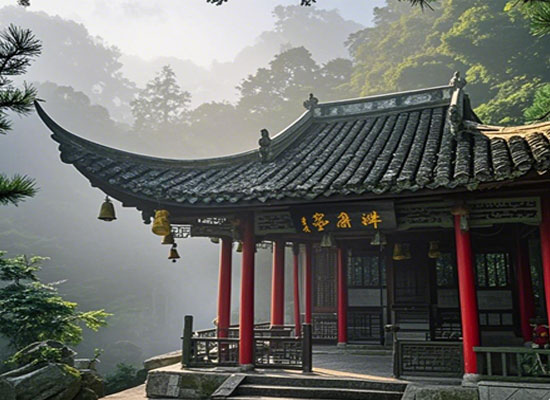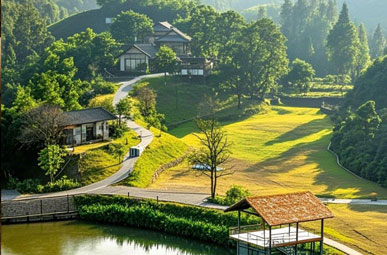Looking for a peaceful and history-rich spot in Chuzhou’s Langya Mountain? The Fengle Pavilion, the star of this Langya Mountain Fengle Pavilion travel guide, is a must-visit! Like a sister to the famous Zuiweng Pavilion, it offers a uniquely tranquil setting. Ancient pavilions, buildings, and lush mountain scenery blend seamlessly, creating a serene atmosphere perfect for relaxation.
Fengle Pavilion is a separate attraction requiring its own ticket (¥20 per person). Tucked behind the mountain west of the Government Office of Court of Imperial Stud, it’s easily accessible. Enter through the main gate of the Nanjing Court of Imperial Stud, follow the mountain path upwards, turn a long bend (about 200 meters), and Fengle Pavilion appears before you.
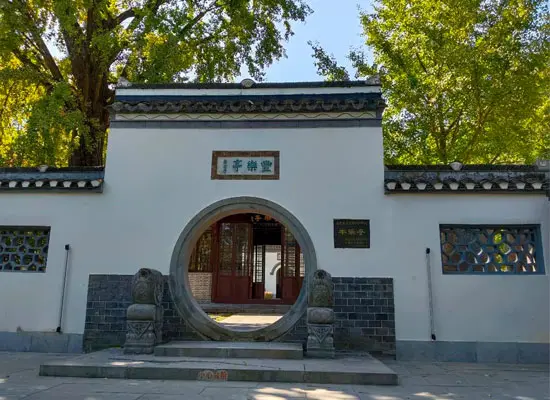
Inside the courtyard, you’ll find three main structures: the Fengle Pavilion itself at the front, the Baofeng Hall in the middle, and a two-story building called “Wei Lou” (危楼) at the rear.
The Story of Fengle Pavilion
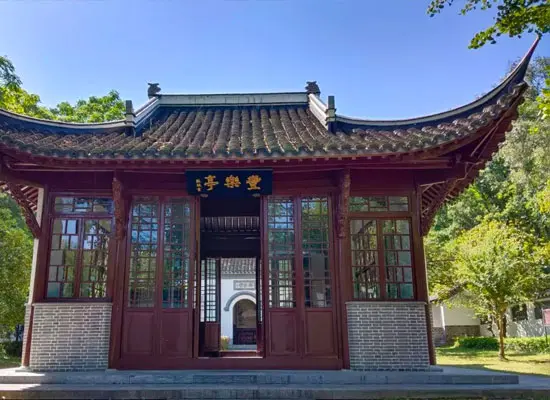
This four-cornered pavilion was built in 1046 AD during the Northern Song Dynasty by Ouyang Xiu, the governor of Chuzhou and a renowned literary giant. He named it “Fengle” (丰乐), meaning “bountiful harvest and shared joy,” expressing his wish for prosperity and happiness for the people. He even composed a poem, “Spring Outing at Fengle Pavilion,” depicting the vibrant spring scenes enjoyed by locals here.
Though appearing recently renovated (exact date unknown), it differs from the open Zuiweng Pavilion. Fengle feels more like a sheltered room. Step inside to see hanging calligraphy, paintings, tables, and chairs – imagine scholars sipping tea and conversing centuries ago.
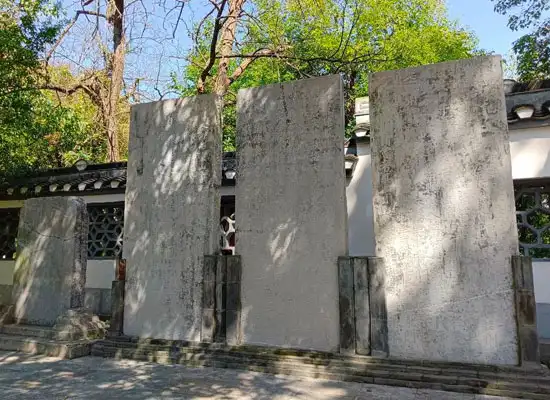
Outside stand three significant stone steles. They bear the “Record of the Fengle Pavilion” essay, written by Ouyang Xiu and transcribed in the clear, elegant calligraphy of the great master Su Shi (苏东坡). The essay details the pavilion’s origin: in his second summer governing Chuzhou, Ouyang Xiu discovered sweet water. Following locals, he found its source south of the city. Enchanted by the towering Feng Mountain (丰山), deep valley, and crystal-clear spring, he had the area cleaned, stones carved, and the pavilion built so he could enjoy the scenery with the people of Chuzhou.
A Charming Anecdote
A more down-to-earth legend exists. Once, hosting guests, Ouyang Xiu sent a servant to fetch water from the Rang Spring near Zuiweng Pavilion for tea. The servant stumbled, spilling the water. Afraid of reprimand, he secretly drew water from Feng Mountain instead. Ouyang Xiu immediately tasted the difference! The servant confessed. Instead of anger, Ouyang Xiu took his guests to Feng Mountain. They found the spring water excellent and the scenery breathtaking! Delighted, Ouyang Xiu ordered the spring dredged, a pond built, and the pavilion erected. The spring was named “Fengle Spring” (丰乐泉), and the pavilion “Fengle Pavilion,” both embodying the wishes for “bountiful harvest” and “shared joy.”
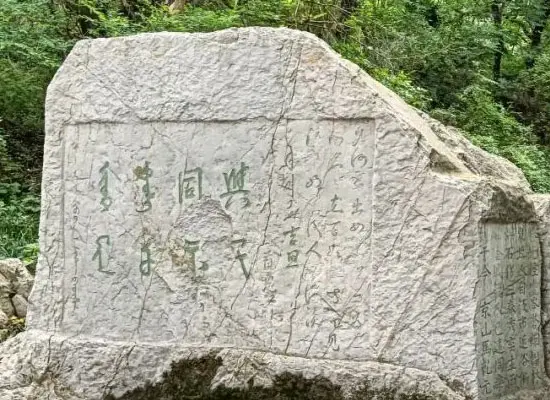
Other Structures in the Courtyard
Behind the pavilion stands the Baofeng Hall (保丰堂), resembling a temple or ancestral hall. Two steles flank its entrance, though their inscriptions are now sadly faded. Historically, precious steles were embedded within Fengle Pavilion itself – Su Shi’s calligraphy of the “Record” in regular script and later reproductions of Wu Daozi’s Guanyin paintings. The steles visible today in the courtyard (three near the pavilion, two before the hall) lack explanatory plaques, leaving their stories for visitors to ponder.
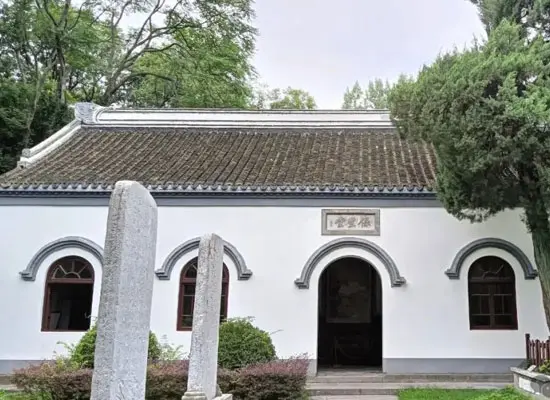
Inside the Baofeng Hall hangs a portrait of Ouyang Xiu, flanked by couplets praising his virtue and literary achievements. It’s said Ming Dynasty murals depicting the “Twelve Scenes of Chuzhou” once adorned these walls.
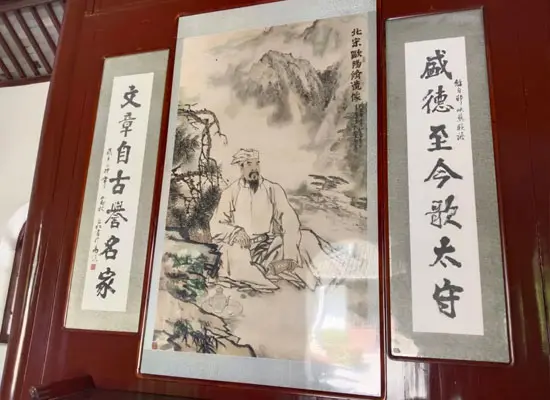
At the courtyard’s deepest point is the delicate two-story “Wei Lou” (危楼). Its name, meaning “Perilous Tower” or “High Tower,” is enigmatic, with no known典故 (diǎngù – allusion/story) or explanation provided. Couplets nearby seem to muse on the passage of time and the site’s profound cultural heritage. The solitude during my visit amplified its mystery.
Elsewhere in the yard, other steles – some standing, others embedded in walls – silently whisper tales of the past.
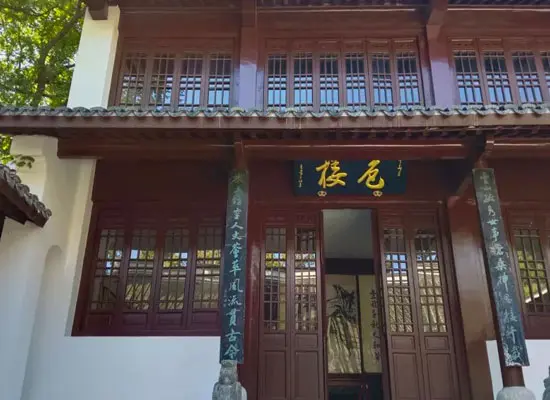
Scenery Beyond the Courtyard
Leaving the courtyard, find the Ziwei Spring (紫薇泉) about 200-300 meters downhill by the roadside. Marked by a prominent stele and surrounded by trees, it’s a pleasant resting spot. This spring and the Rang Spring before Zuiweng Pavilion are “sister springs”! It was the discovery of this excellent Ziwei Spring that inspired Ouyang Xiu to build Fengle Pavilion and write the “Record of the Fengle Pavilion,” a companion piece to the “Record of the Zuiweng Pavilion.”
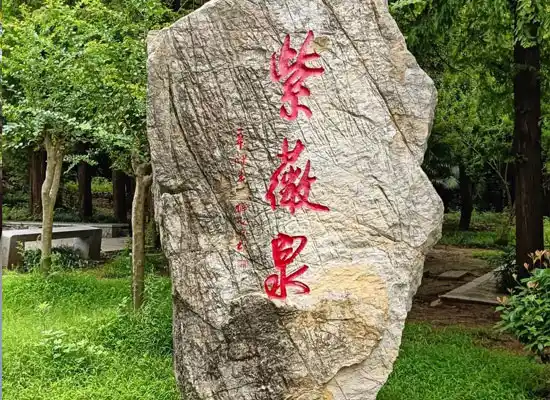
The spring is well-maintained. Approach the water’s edge, cup the clear water in your hands, and splash your face. Its purity reveals red ornamental fish and wild crucian carp swimming freely. A stele beside the spring bears Ouyang Xiu’s poem “The Secluded Valley Spring” (幽谷泉).
Don’t miss the “Sharing Joy with the People” (与民同乐) rock carving in the woods northwest of the Fengle Pavilion courtyard. At first glance, the newly cleared area and stele might seem modern, inscribed with the phrase in both Chinese and Manchu script. Closer inspection, however, reveals it as a genuine Qing Dynasty relic.
Nearby reconstructed sites like the Secluded Valley Spring (幽谷泉, behind Youfang Pavilion) retain their original names. Walking the shaded mountain paths to these spots, beneath tall, dense trees, feels deeply secluded. While beautiful, watch your step for potential snakes, insects, or hornets.
- Why Visit?
Though perhaps less famous than Zuiweng Pavilion, Fengle Pavilion’s tranquility is its treasure. Sitting within the pavilion Ouyang Xiu built, reading Su Shi’s calligraphy on the stele, tasting the millennium-flowing waters of Ziwei Spring – it feels like stepping back in time, sharing that ancient ideal of “sharing joy with the people.” The sight of the crystal-clear spring and its carefree fish will likely become the most vivid memory of your Langya Mountain journey. (Approx. GPS: 32.2761° N, 118.3092° E – Taipusi starting point)

